AMD Ryzen 5 2400G and Ryzen 3 2200G Integrated Graphics Frequency Scaling
by Gavin Bonshor on September 28, 2018 12:30 PM EST- Posted in
- CPUs
- AMD
- GPUs
- Overclocking
- Zen
- APU
- Vega
- Ryzen
- Ryzen 3 2200G
- Ryzen 5 2400G
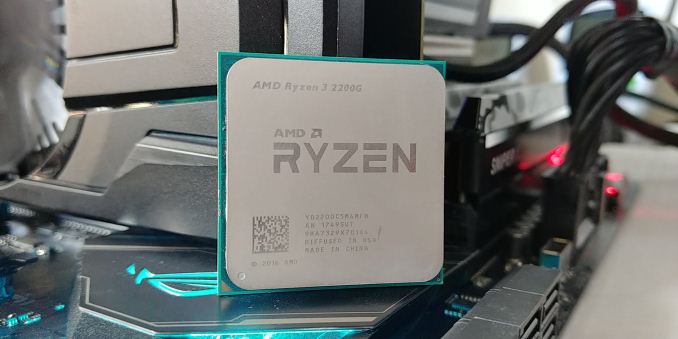
One of the last poignant questions from our previous Ryzen APU coverage is the way that integrated graphics scales with overclocking. As these low-end Ryzen APUs are all about gaming on a budget, our previous looks into core frequency and memory scaling lead naturally into examining how well the graphics overclocks and what extra performance can be had with a light touch of BIOS settings. We pushed both of our APUs to 1600 MHz on the graphics, representing a +45% overclock, which translates into some interesting results.
| Recommended Reading on AMD Ryzen APUs | |||
| 2400G Review | 2200G Review | Overclocking | Delidding |
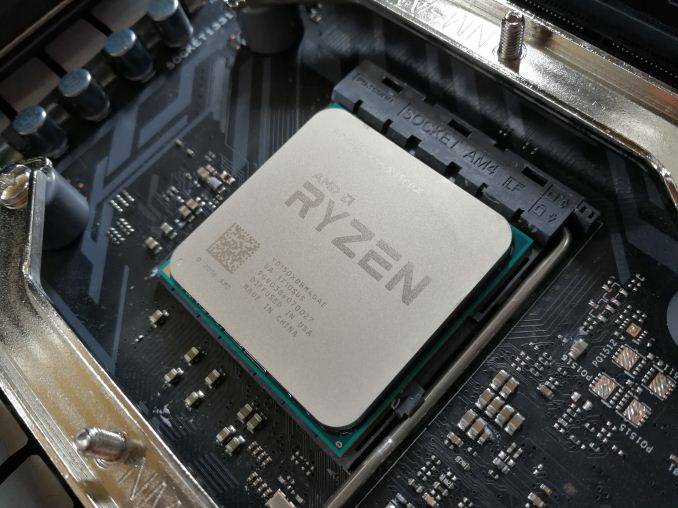 |
 |
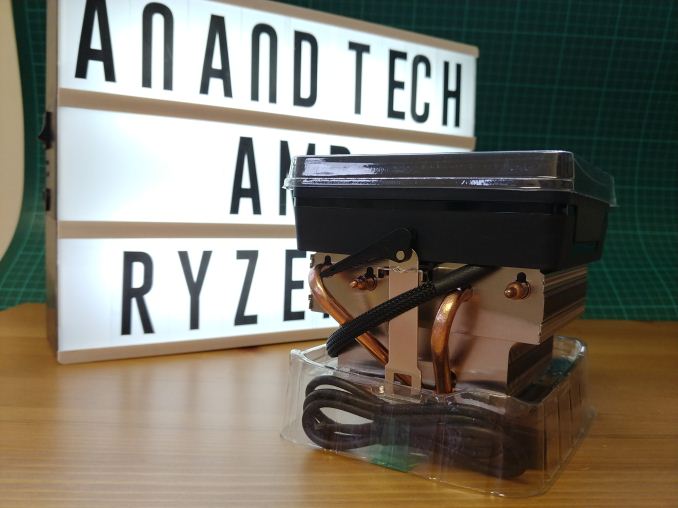 |
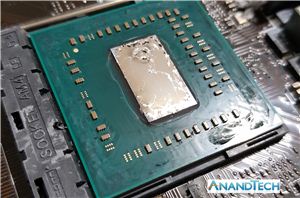 |
| Core Scaling | Memory Scaling | Graphics Scaling | Best CPUs |
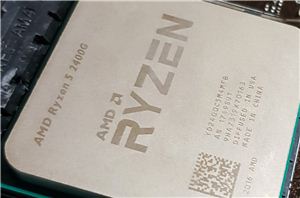 |
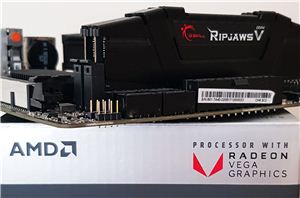 |
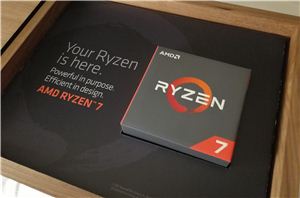 |
|
Ryzen 2000 Series APUs: Going For Gaming
The pairing of AMD's high-performance Zen compute cores and Vega graphics into a tidy little package was a resuscitation for integrated graphics, making the low-end desktop market a lot more interesting, as our Ryzen 5 2400G and Ryzen 3 2200G review concluded. In order to increase performance for gaming, there were three potential avenues to look into. The first one led to our analysis into how memory frequency scales with AMD’s APUs, based on the relationship between memory performance and gaming, showed that memory can have a positive impact on performance. The second was our Ryzen 5 2400G and Ryzen 3 2200G core frequency scaling article, which showed that increasing the CPU core speed didn’t have the effect on gaming performance one would potentially hope to find. The last of the set is overclocking the integrated graphics frequency, which often leads to a direct increase in frame rates.
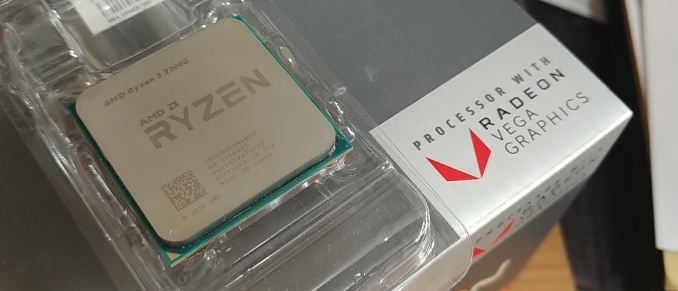
The interesting thing to take from our Ryzen 2000 series APU overclocking guide was that the performance increase was easy to spot when every component on the amalgamated Zen and Vega package plus memory was pushed. The biggest take from our Ryzen APU memory scaling was that the Infinity Fabric interconnect did improve performance from memory in gaming, more so than pure CPU core frequency in certain cases. It was also noted that overclocking everything at once was more difficult than increasing each part independently - what was a good individual overclock, was not always possible when the CPU, memory, and graphics were overclocked together.
Focusing specifically on the intergrated graphics for this article, the primary aim is to ascertain whether or not overclocking the Vega cores on their own yields a big enough benefit in our game testing suite to make it worthwhile. As long as the graphics can continually be fed from the memory and infinity fabric, we should see a good linear increase, especially when the GPU is the bottleneck, however the resolutions aimed at these GPUs might throw interesting features into the mix.
In this review we will recover overclocking the integrated graphics, and take each APU from its stock graphics frequency up to the highest overclock we could achieve, in 50 MHz steps. The results, are interesting.
Test Bed and Hardware
As per our testing policy, we take a premium category motherboard suitable for the socket and equip the system with a suitable amount of memory. With this test setup, we are using the BIOS to set the integrated graphics frequency using the provided straps on the MSI B350I Pro AC motherboard. The memory is set to the maximum supported official speed. The CPU core frequency on both the Ryzen 5 2400G and Ryzen 3 2200G was left at their respective default settings.
| Test Setup | |||
| Processors | AMD Ryzen 3 2200G | AMD Ryzen 5 2400G | |
| Motherboard | MSI B350I Pro AC | ||
| Cooling | Thermaltake Floe Riing RGB 360 | ||
| Power Supply | Thermaltake Toughpower Grand 1200 W Gold PSU | ||
| Memory | G.Skill Ripjaws V DDR4-2933 16-18-18 2x4 GB 1.35 V |
||
| Integrated GPU | Vega 8 1100 MHz |
Vega 11 1250 MHz |
|
| Hard Drive | Crucial MX300 1 TB | ||
| Case | Open Test Bed | ||
| Operating System | Windows 10 Pro | ||
We took our previous gaming suite for this comparison. It's a little dated, but it still checks out. We will be using newer games in future analysis pieces.
| Titles Tested | |||||
| Game | Genre | Release Date | API | IGP Settings |
|
| Shadow of Mordor | Action / RPG | Sep 2014 |
DX11 | 1080p Medium |
|
| F1 2017 | Racing | Aug 2017 |
DX11 | 1080p Medium |
|
| Civilization VI | RTS | Oct 2016 |
DX12 | 1080p Low |
|
| Total War: WARHAMMER 2 | RTS | Sept 2017 |
DX11 | 1080p Medium |
|
| Ashes of the Singularity | RTS | Mar 2016 |
DX12 | 1080p Standard |
|
| Rise of The Tomb Raider | Action | Nov 2015 |
DX12 | 1080p Medium |
|
AMD's APU Stack
Since our last big coverage of AMD's Ryzen APUs, it was announced that several new parts will be coming to the market under the 'Athlon' brand. These will be much cheaper parts, starting at $55, and offering fewer cores and fewer Vega compute units for that market.
| AMD's APU Stack | |||||||
| AnandTech | Zen | Cores w/HT |
Base Freq |
Turbo Freq |
Vega CUs |
TDP | MSRP |
| Ryzen 5 2400G | Zen | 4 / 8 | 3600 | 3900 | 11 | 65W | $169 |
| Ryzen 3 2200G | Zen | 4 / 4 | 3500 | 3700 | 8 | 65W | $99 |
| Athlon 240GE | Details to be disclosed in Q4 | ||||||
| Athlon 220GE | Details to be disclosed in Q4 | ||||||
| Athlon 200GE | Zen | 2 / 4 | 3200 | - | 3 | 35W | $55 |
| * 2400GE and 2200GE are 'released' but not at retail | |||||||
We currently have the 200GE in for a future review, but everything in this article should apply to this APU as well.
Pages In This Review
- AMD Ryzen 2000 Series: Going For Gaming
- Overclocking the Integrated Graphics: How To
- AMD Ryzen 5 2400G: Gaming Tests (1)
- AMD Ryzen 5 2400G: Gaming Tests (2)
- AMD Ryzen 3 2200G: Gaming Tests (1)
- AMD Ryzen 3 2200G: Gaming Tests (2)
- Overall Analysis


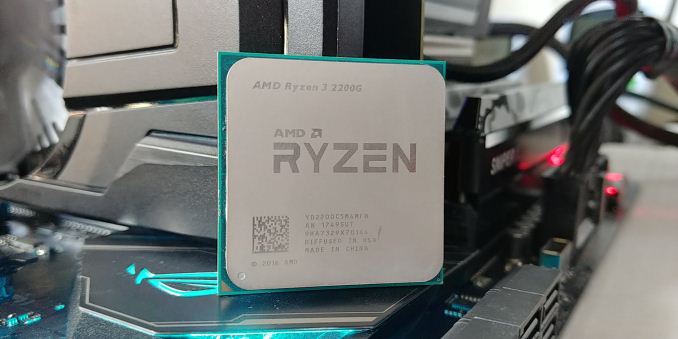








49 Comments
View All Comments
neblogai - Saturday, September 29, 2018 - link
Or a €10 Deepcool Gammaxx 200T, €15 Gammaxx 300, etc.lightningz71 - Saturday, September 29, 2018 - link
If you keep the overclock reasonable. Keep the CPU stock and push the iGPU to 1600mhz. If you push higher, it starts demanding a lot of SOC voltage, which hurts the memory controller performance. There are a few B450 boards with decent 2 phase SOC sections that would be fine there. The problem is having the option in the BIOS to actually overclock the iGPU.dromoxen - Sunday, September 30, 2018 - link
I dont think ppl are are able to push higher, 1600mhz seems to be pretty much the outer limit. It appears that the greatest increase is going from 1100mhz to 1150mhz after that the gains are much less. Power draw and heat would be nice to know . I would like to have one of these in a nuc style system as a tellybox maybe the ge's will suit better. They can only get more popular if Intel cant supply Budget chips for next 9 monthseastcoast_pete - Saturday, September 29, 2018 - link
Gavin, thanks for this last chapter of the Zen APU reviews! As mentioned by others here, it would be helpful if you could post the power draw (even just overall) figures; they usually give a good idea how much of a sweat the silicon works up. The other point is that if I would OC either the CPU or GPU on a 2200G or 2400G, I would at least try to OC the memory a bit, too. With graphics likely limited by memory speed, that seems to be a logical thing to try. If you did, any information on that combo (OC'd graphics plus OC'd memory) would be appreciated! It doesn't have to be a full list of all OC permutations.ballsystemlord - Saturday, September 29, 2018 - link
You wrote the wrong APU name down in the paragraph reading "Performance in Shadow of Mordor wasn't the best we have seen from the game testing, with average framerates gradually increasing on the 2400G."You were testing the 2200G in that section.
I know it's easy to make that mistake, I do it too.
Haawser - Saturday, September 29, 2018 - link
"For any compute related workloads, the integrated graphics frequency is ineffective whereas pure MHz on the Ryzen cores and memory frequency can play a major part in improving performance throughput. "Implying that memory overclocking isn't useful for graphics too ? Why didn't you try overclocking the graphics *and* memory, seeing as both are easy to do ? And 90% of APU users interested in gaming will anyway ?
eva02langley - Saturday, September 29, 2018 - link
I am having a similar motherboard, the MSI B450i Gaming AC plus, and the same behavior between 1350-1400MHz happen.I just put the iGPU at 1500MHz with 1.2V and it is running flawlessly in games.
Also, I am experiencing strange blinking black screen once in a while. It is like a blinking of an eye. It is kind of annoying.
Do you experience the same thing?
wilsonkf - Sunday, September 30, 2018 - link
Why don't you test at least one more faster memory speed (e.g. 3466Mhz)? This would be interesting.hashish2020 - Tuesday, October 2, 2018 - link
I hope that they end up doing that, because that will likely be the sweet spot for casual gamers like me who are thinking about getting back into building desktops.lightningz71 - Tuesday, October 2, 2018 - link
The memory controller on the 2400G is not improved over Zepplin in any measurable way. It gets unstable quickly past 3200/3333 (though, with very loose timings and good samples, there are OC examples in the 3400 range, though, stability is questionable.)Buildzoid on reddit has a video on testing. He showed that B-die can net you tight timings at 3200/3333/ but gets VERY hot above that. E-Die was showing stability and lower temperatures at 3400, but, the timings were looser to get there. No matter what, his performance testing showed that 3200/3333 with tight timings were just as fast as 3400 with loose timings, and more achievable. His absolute fastest times were with UNSTABLE runs of B-Die at 3400+ mhz with passable timings, but it required considerable cooling to occasionally complete a test.
The advantage to keeping the memory at 3200/3333 with tight timings is that you can run a bit more SOC voltage and maybe get a bit more out of the iGPU. 1600 is a reasonable overclock, but, with a bit more voltage, people are getting it past 1650 and sometimes 1700.
I haven't seen delidding results on iGPU overclocking with memory overclocking at the same time.